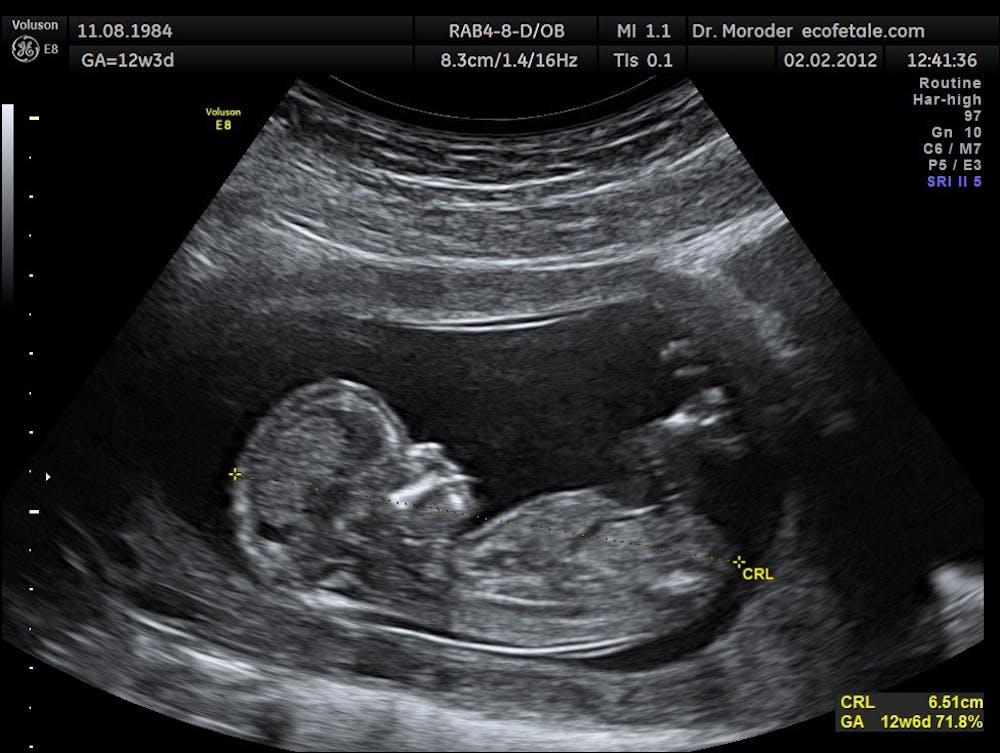Last year, the internet community was touched by a video of a blind mother-to-be crying happy tears as she traced her fingers over the 3-D printed ultrasound of her unborn son.
Scientists are now ready to take parents’ first meetings with their children to a whole new level.
Led by Dr. Heron Werner, researchers at the Clínica de Diagnóstico por Imagem in Brazil recently developed a groundbreaking scanning technology. It combines ultrasound and magnetic resonance imaging (MRI) to allow mothers and fathers to meet with their unborn children in an immersive, multimedia and three-dimensional virtual reality.
Ultrasound and MRI are used to scan parts of the baby, which can be processed and put together by computer software and brought to life with an Oculus Rift 2 virtual reality headset.
The immersive technology is complete with sounds of the fetus’s heartbeat, and the headset allows users to study the 3-D view of the fetus from different angles simply by moving their head. Utilizing this new technology, parents will truly be able to watch their child’s development from up close even before birth.
The scope of these virtual reality models does not end at family bonding. The 3-D fetal models merged with virtual reality technology have the potential to improve understanding of fetal anatomy. Since the models have been found to be almost identical to the postnatal appearance of the newborns, they can also help doctors identify, characterize and solve a variety of pre-birth problems.
Models may also be utilized to predict difficulties that occur during or after birth.
The remarkably accurate model, which includes the womb, fetus, placenta and umbilical cord, also maps out the complete internal structure of the fetus, including a detailed recreation of the respiratory and digestive tracts.
One common complication after child delivery is the inadequacy of airway patency. Airway patency, or the state of airways being unblocked, is an important issue for a developing fetus.
At the time of birth, the infant’s airways must be open in order for it to clear its lungs and take its first breath of air. With 3-D virtual reality imaging, doctors can assess the entirety of the airway. If physicians notice that there is an unusual mass near the fetus’s airway in ultrasound imaging, they can use 3-D visualization to plan the safest and most efficient way to clear the airway properly following birth.
In addition, other abnormalities in the fetus’s development can be more easily noticed with the fetal images in virtual reality, which is sharper and clearer compared to those generated by ultrasound and MRI on traditional displays.
Treatment of developmental issues that require special medical or surgical attention immediately after birth can be carefully planned and prepared for so that no time is lost. More serious abnormalities in unborn babies that demand action right away can be diagnosed and corrected earlier on, especially with advancing surgical technology that can now be used to operate on a fetus that is still in the womb.
In the case in which a fetus does have abnormalities, it is often up to the parents to make a difficult and sometimes even devastating choice about their baby’s health and treatment.
With immersive visualization, parents, too, can join in the discussion about their child and develop a more concrete understanding of any developmental issues that their baby may have. Abetter understanding of the baby’s state can help physicians and parents to make better informed decisions about delivery and care.
According to Dr. Werner, he and his team hope that 3-D immersive virtual reality visualizations of unborn babies will involve parents with their child at an earlier stage and help ease discussions between physicians and parents about fetal diseases.
Scientifically and socially, their novel development addresses several important problems at once.





